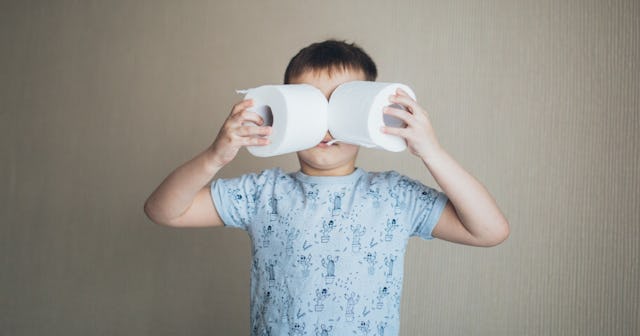How To Tell If Your Child Has A UTI, And What You Should Do For It

This article has been medically reviewed by Howard Orel, MD. Board-certified and a Fellow of the American Academy of Pediatrics, Dr. Orel runs an active general pediatric practice, Advocare Marlton Pediatrics. He also serves as CEO of Advocare — one of the largest independent medical groups in the country.
Though we may not associate urinary tract infections (UTIs) with children, they probably happen more often than you think. And while it’s uncommon for children under the age of five to get a UTI, it is possible for little ones to get these uncomfortable infections, too. As a parent, it’s hard to watch your child be in pain, so you’re likely looking for any treatments for UTIs in children — including home remedies. While it’s imperative to take a child or baby with a UTI to receive medical treatment, once you do that, there are ways you can help them feel better at home and improve their health.
As a concerned parent, you’re here to find out what those ways are, right? Well, consider this your guide to getting your little one through a UTI.
What causes a urinary tract infection in a child?
In case you need a refresher, the urinary tract in a human consists of the kidneys, narrow tubes called “ureters,” the bladder, and the urethra. According to Johns Hopkins Medicine, bacteria causes UTIs, and bacteria can infect any part of the system.
So, where do these bacteria come from? More often than not, the bacteria involved are Escherichia coli (E. coli), which live in the colon. Yes, that’s exactly what it sounds like: When little ones don’t wipe from front to back, they can spread E.coli bacteria from their little butts to their urethra. UTIs are far more common in kids with a vagina/vulva since their urethra is much shorter than it is in kids with a penis. However, a child with a penis can get a UTI if part of their urinary tract is blocked. In such cases, the infections are more common in kids with uncircumcised penises.
What are UTI symptoms in children?
If you’re unsure how to tell if a child has a UTI, the best way to know for sure is to look for specific symptoms and signs. UTI symptoms can differ from child to child and between babies and children, but some symptoms may include:
- A sudden need to urinate
- The need to urinate often
- Loss of control of urine (incontinence)
- Pain while urinating
- Trouble urinating
- Pain above the pubic bone
- Blood in the urine
- Bad-smelling urine
- Nausea and vomiting
- A fever
- Chills
- Pain in the back or side below the ribs
- Tiredness
The signs and symptoms of UTIs in babies can include:
- Fever
- Bad-smelling urine
- Irritability
- Crying
- Fussiness
- Vomiting
- Poor feeding
- Runny stools or diarrhea
It can be hard to determine whether a child or baby does, in fact, have a UTI since so many of the symptoms are also associated with other conditions and illnesses. For example, a UTI can cause vomiting, though that may not be the first thing to come to mind when your child is throwing up.
What are some tips for how to treat a UTI in a child?
If you suspect that your baby or child has a UTI, you need to take them to the doctor to get an official diagnosis so they can begin treatment (if necessary). Expeditiousness is the key to preventing kidney damage, according to Kids Health from The Nemours Foundation. To diagnose a UTI, healthcare providers typically administer a urine test.
Because UTIs are bacterial infections, they require antibiotic treatment. Kids’ symptoms should lessen within two or three days of starting antibiotics — if that’s not the case, let your doctor know. (They might want you to bring your child in anyway for follow-up testing.) And don’t stress too much, Mama; your little one shouldn’t be uncomfortable for too long. Most UTIs in children clear up within one week.
As much as you may want to treat a child’s UTI exclusively using home remedies, this is a situation when you should definitely see your pediatrician and get a confirmed diagnosis, followed by appropriate treatment. But that doesn’t mean you just have to sit back and let the antibiotics kick in.
The most important thing you can do for your child is to make sure they drink plenty of fluids. In a perfect world, that would be water. But if your kid refuses to drink it, try giving them other liquids — as long as they don’t contain caffeine, which can irritate the bladder and exacerbate the situation. You can also ask your doctor about the possibility of giving your child over-the-counter age-appropriate pain relievers if needed (check before dispensing them yourself). Finally, some children may get some relief from a heating pad placed on their abdomen.
Make sure your kiddo is getting their vitamin C, which is a great antioxidant used to fight bad bacteria and boost the immune system. Teach your nugget good bathroom habits too, like not holding in their pee until the last minute. When urine stays in the bladder too long, it can lead to infection. This is why constipation is also a threat. Blocked bowels can cause stool to press against the urinary tract, which prevents the flow of urine.
This article was originally published on